- Home
- My Trip Diary
- Do you know how to read this word?
Do you know how to read this word?
- 2018/6/11
- 9 comments
Good evening!
Thank you very much for visiting this blog.
Well, do you know how to read “調神社”?
This is a shrine in Urawa in Saitama Prefecture. If you read it normally, it can be read “Cho-Jinja”, but as you can imagine, it’s different in this case.
The day I visited this shrine was a Saturday in the later June.
It was sunny with no clouds, not like rain season, and not too hot. It was a perfect day for going out.
I had just recovered from exhaustion from too much working, so I decided to go to “調神社” which I had been to many times for refreshing.
To go to this shrine, you get off the train at Urawa Station, and walk straight along a wide street from the west exit.
You reach a suit shop “Konaka”, and turn left at this junction and go further.
The left side where many trees are in the photo above is “調神社”.
There is a sign board like this below if you go closer to the area.
“調公園“ (= “調” Park) is written as “Tsukinomiya Park” in alphabets, and “Tsukinomiya” is a nickname which is used by the local people. The official way to read “調” is “Tsuki”, and “調神社” is “Tsuki Jinja”.
Why is it called “Tsuki Jinja”?
Another board in the next photo explained the history of this shrine.
In a brief summary, this shrine was established to offer cloths to the god, and later, Yamatohime who was a waiting maid of the god at Ise Shrine built a warehouse to store cloths for the offering in Tsuki Jinja’s property.
In this case, “調” is as in “租庸調 (So-Yo-Cho)”, the tax which was charged under the politic system “Ritsuryo Sei” from Asuka period (about the 7th Century) to Nara period.
Maybe many Japanese people should remember the name of “So-Yo-Cho” even though they might not remember exactly what that is. “So” meant the tax paid with rice, “Yo” was the tax of labor, and “Cho” was cloths. When the letters “So(租)
” or “Cho(調)” come before a letter “物 (=thing)” like “租物” or “調物”, they were read “Mitsugimono” which is usually written “貢物” meaning the offering to the god.
I imagine that this is how the sound “調 (Tsuki)” was made;
“調物 (Mitsugimono)” → “Mi ‘Tsugi’ mono” → “Mi ‘Tsuki’ mono” → “調” = “Tsuki”
To say it shortly, this shrine used to have a warehouse to store “調物 – Mitsugimono (offering)”, and the letter “調” started to be read “Tsuki”.
The interesting point of this shrine is not only its name. Please see the first photo of this article again.
Do you see what I want to say?
There is no Torii (The front gate of Shinto shrine. Shrines usually have Torii.). There are somethings like Torii’s side poles, but there’s no cross bar on the top (it’s called “Kasagi”).
The history board also mentioned about this.
This shrine was a place to store the offerings, and the top bar of Torii interrupted carrying in and out the goods, so it was removed.
It’s very understandable.
And there’s another unique point.
If you see the left and right edge of the photo,
There are rabbits. There are usually statues of guardian dogs called “Koma Inu” (“Inu” means dog) beside Torii, but this shrine has “Koma Usagi” instead. (“Usagi” is rabbit.)
Why are there rabbits instead of dogs?
“調” is read “Tsuki”, and “月 (moon)” is also read “Tsuki”.
In Japan, it is said from the ancient times that the moon’s surface pattern is rabbits which are making rice cake. This is the reason why there are rabbits beside the gate.
Shrines usually have places to wash hands before going to the god’s buildings, and that of “Tsuki Jinja” is unique.
There is a rabbit here too! How cute(≧▽≦)!
I got excited and patted the rabbit many times in spite of my age.
Probably other people do the same thing. The surface of the rabbit was very smooth.
There are even more.
At this beautiful pond,
There are more rabbits!
I personally call this shrine “Usagin Jinja” in my mind because there are many “Usagi” (rabbit).
By the way, this shrine is also said to bring a good luck to the visitors after its name “Tsuki”, which also means “Good luck” in Japanese.
Indeed, I feel that I get good luck after visiting this shrine and another shrine in Ibaraki Prefecture.
For example, recently I often hear fortune telling saying that I’m “in good luck”, “going to see a soul mate soon”, “going to get back with ex-lover”, “in the best money luck” and so on (Well, nothing has come true yet though). In addition, I won drinks in a lot at Seven Eleven both in lunch time and evening today.
No matter whether you really get good luck or not, this shrine is interesting enough because you can see unique pretty rabbits (the impression depends on the person though), so I recommend you to visit there one time if you come near.
It’s our great pleasure if this article is helpful for you.

Comment (0)
No trackbacks yet.














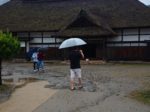
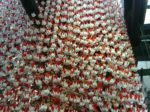
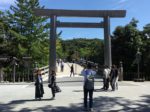
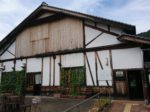

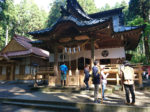
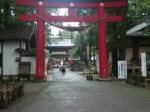

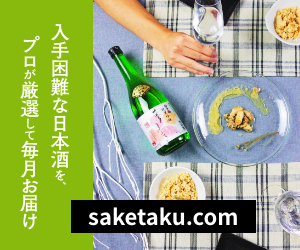
No comments yet.